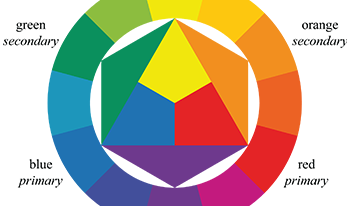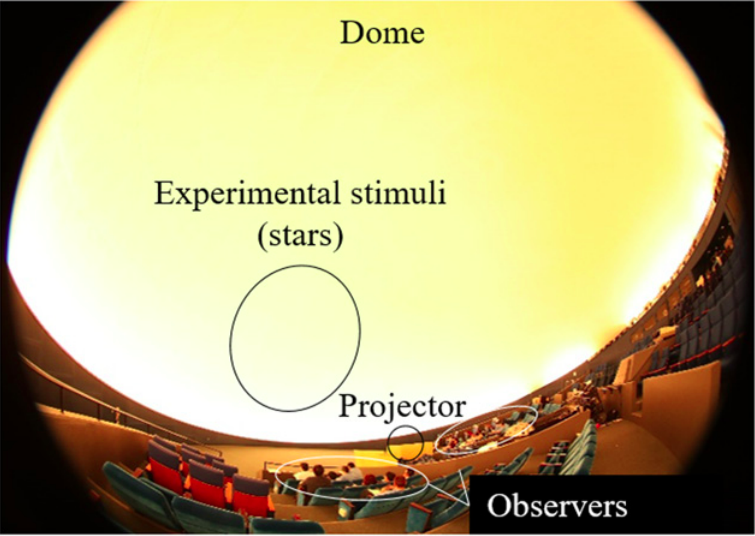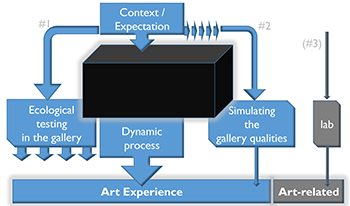
A color wheel is a tool for ordering and understanding hue. Different color wheels differ in the spacing of the colors around the wheel. The opponent-color theory, Munsell’s color system, the standard printer’s primaries, the artist’s primaries, and Newton’s rainbow all present different variations of the color wheel. I show that some of this variation is owing to imprecise use of language, based on Berlin and Kay’s theory of basic color names. I also show that the artist’s color wheel is an outlier that does not match well to the technical color wheels because its principal colors are so strongly connected to the basic color names.

A planetarium imitates a starry sky with physical and technical limitations using a dome, projector, and light source. It is widely used for entertainment, and astronomy and physics educations. In our previous study, we investigated the evaluation for faithful reproduction of a star field in a planetarium by performing psychometric experiments with 20 observers for plural projection patterns with different reproduction factors (color, luminance, and size of projected stars). In this study, we investigate the relationship between faithfulness and preference of a star field in a planetarium through a psychometric experiment with 47 observers. The experimental procedure followed the previous study. The rating of faithfulness improved for the projection pattern with a smaller star size. For the preference evaluation, the projection pattern with low luminance significantly lowered the preference rating. The results of the experiment indicate that the preferable star reproduction was different between male and female observers, whereas the faithful star reproduction was not significantly different in the evaluations between male and female observers. The male observers sought a faithful star reproduction as the preferred reproduction. In contrast, the female observers did not feel the faithful star reproduction preferable, and evaluated the more brilliant star reproduction as the preferred reproduction. These results were not dependent on the experience in astronomical observations.

Art experience means the rich experience of artistic objects that are mostly embedded in situational, social, and cultural contexts: for instance when encountering art in art galleries or museums. Art experience lets us reflect on the content, the style, and the artist behind the artwork—moreover, it lets us reflect about the percept, perception, the world, ultimately: about us. Current works in the field of empirical aesthetics unfortunately often ignore context factors that are so important for such deep and far-reaching experiences. Here I intend to refer to the different paths of measuring art experience via Path #1 by testing within the ecological valid context of art galleries via field studies, via Path #2 by simulating certain contextual and perceptual factors in a lab-oriented study design and via Path #3 by testing art-related material in labs without paying attention to such factors. The way we research art experience drastically changes the quality and nature of the output, especially if we ignore certain essential factors which are typically involved when encountering art galleries in real life via Path #3—mainly because participants do not show the typical motivation, interest and effort which they would typically face in art galleries. Furthermore, because the depiction quality of artworks, the context and the social situation in which they are inspected is fundamentally different in the lab, the respective impression is also very different. As most research ignores such factors, we might often be misled by the results of such studies; especially when the extraordinary and unique cultural status that makes artworks so different to ordinary objects is ignored. The paper aims to guide researchers in finding the right study paradigm and best measures to answer their regarding research questions most adequately.